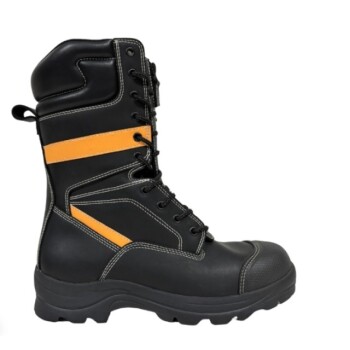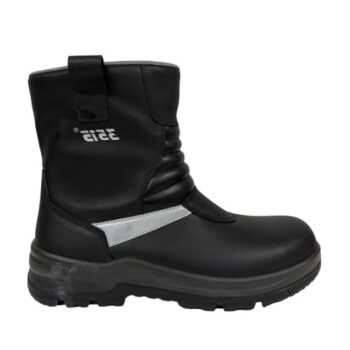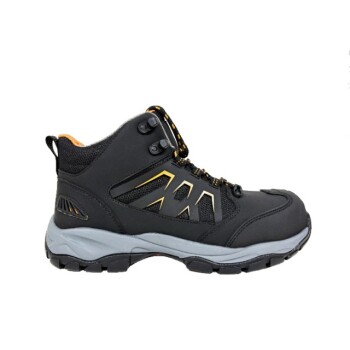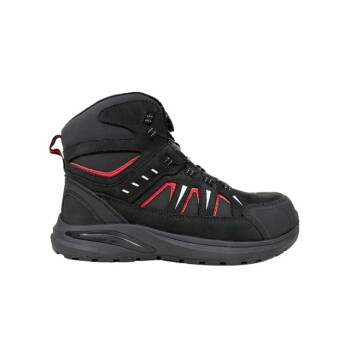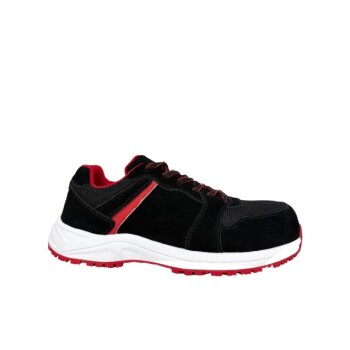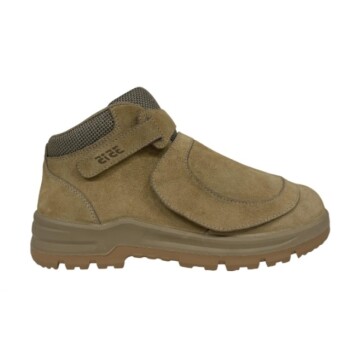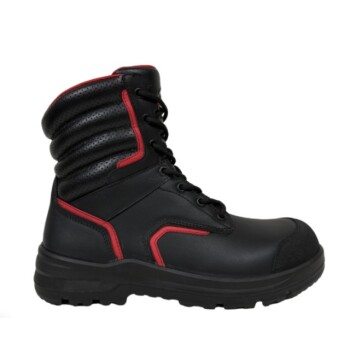The fundamental difference is that a "safety boot" is a legally defined category of footwear that must meet specific, tested safety standards, whereas a "work boot" is a general term for any durable boot intended for labor. All safety boots are work boots, but not all work boots are safety boots.
The critical distinction lies not in the materials or appearance, but in certified protection. A safety boot provides a guaranteed, tested level of defense against specific workplace hazards like impact, compression, and puncture, which a general work boot does not.
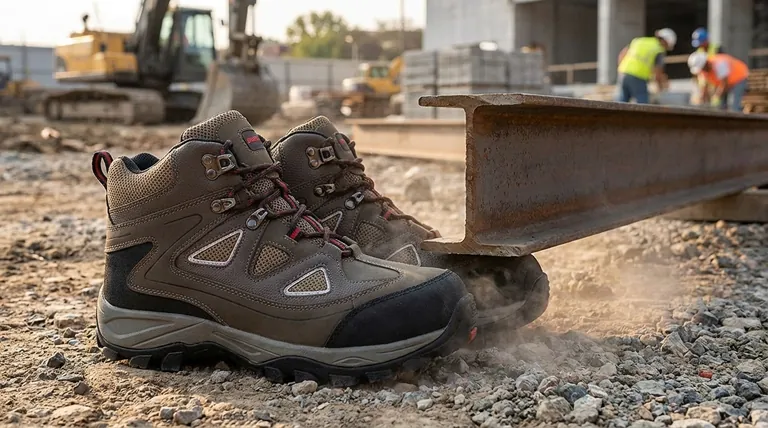
Defining the Terms: General vs. Certified
Choosing the right footwear requires understanding this core difference. One is a broad category based on durability, while the other is a precise classification based on tested performance against danger.
The "Work Boot": A General-Purpose Tool
A work boot is any boot designed for durability, support, and comfort during physical labor. This is an extremely broad category.
It can include everything from rugged logger boots and waterproof PVC boots to specialized tactical or motorcycle boots. Their common feature is being tougher than a casual shoe.
However, the term "work boot" carries no guarantee of specific protection. It may have a reinforced toe or a slip-resistant sole, but it has not been officially tested and certified against a national safety standard.
The "Safety Boot": A Specialized, Certified Protector
A safety boot is a specific type of work boot that is designed, tested, and certified to meet or exceed the safety standards set by organizations like the ASTM International (ASTM F2413 in the US).
These standards define precise requirements for protection against common job site hazards. If a boot is marketed as a "safety boot," it must be labeled with the specific standards it meets.
This certification is your guarantee that the boot will perform as expected when faced with a specific danger.
Key Features That Define Safety Footwear
While a general work boot might have some of these features, a certified safety boot guarantees their performance level.
Toe Protection (Impact and Compression)
This is the most well-known safety feature. Certified safety toes, often made of steel, composite materials, or alloy, are rated to protect the wearer from a specific level of impact and compression, such as from a heavy falling object.
Puncture Resistance
Many safety boots include a puncture-resistant plate built into the midsole. This is designed to prevent sharp objects like nails from penetrating the sole of the boot and injuring the foot.
Sole Properties
Safety boot soles are tested for specific performance characteristics. This often includes certified resistance to slipping, oil, chemicals, or heat, providing secure footing and protection in hazardous environments.
Specialized Hazard Protection
Beyond the basics, safety boots can be certified for a range of specialized threats. This includes protection against electrical hazards (EH), static discharge (ESD), extreme heat (like firefighter boots), or caustic chemicals (like some PVC boots).
Understanding the Trade-offs
Choosing between a general work boot and a certified safety boot involves balancing protection, comfort, and job requirements.
Comfort vs. Maximum Protection
Certified safety features, particularly steel toes and puncture-resistant plates, add weight and can reduce the boot's flexibility.
For physically demanding work in a low-risk environment, a high-quality general work boot might offer superior all-day comfort.
The Risk of "Safety-Like" Features
Many general work boots are designed to look tough, sometimes with a bulky toe cap that resembles a safety toe.
This can create a false sense of security. Unless the boot is explicitly certified to a safety standard (e.g., ASTM F2413), you cannot rely on it for protection in a hazardous environment.
Cost and Job Requirements
Certified safety boots are engineered and tested to a higher standard, which can be reflected in the price.
The most important factor is your workplace requirement. If your job site mandates safety-toed footwear, a general work boot is not a permissible or safe alternative, regardless of its quality.
Making the Right Choice for Your Needs
Your decision should always be based on a clear assessment of your environment and the potential risks you face.
- If your primary focus is compliance and protection from known hazards: You must choose a certified safety boot that meets the specific standards required for your job site.
- If your primary focus is durability and comfort for low-risk work: A high-quality general work boot without a safety toe may be a more comfortable and suitable choice.
- If your primary focus is a specialized activity like motorcycling or firefighting: You need a boot specifically designed and tested for that purpose, as it will have unique protective features beyond standard work boots.
Ultimately, understanding the difference between general durability and certified protection is the key to keeping you safe and effective on the job.
Summary Table:
| Feature | Work Boot | Safety Boot |
|---|---|---|
| Definition | General term for durable labor boots | Legally defined, certified protective footwear |
| Key Distinction | Durability & comfort | Guaranteed, tested protection against hazards |
| Certification | Not required | Must meet standards (e.g., ASTM F2413) |
| Toe Protection | May have a reinforced toe | Certified safety toe (steel/composite) |
| Puncture Resistance | Not guaranteed | Certified plate in the midsole |
Need the Right Boots for Your Team or Brand?
As a large-scale manufacturer, 3515 produces a comprehensive range of certified safety boots and durable work boots for distributors, brand owners, and bulk clients.
We ensure your footwear meets the exact safety standards and durability requirements for your market. Our production capabilities encompass all types of protective and occupational footwear.
Let's discuss your specific needs: Contact our experts today to get the right footwear solution for your business.
Visual Guide
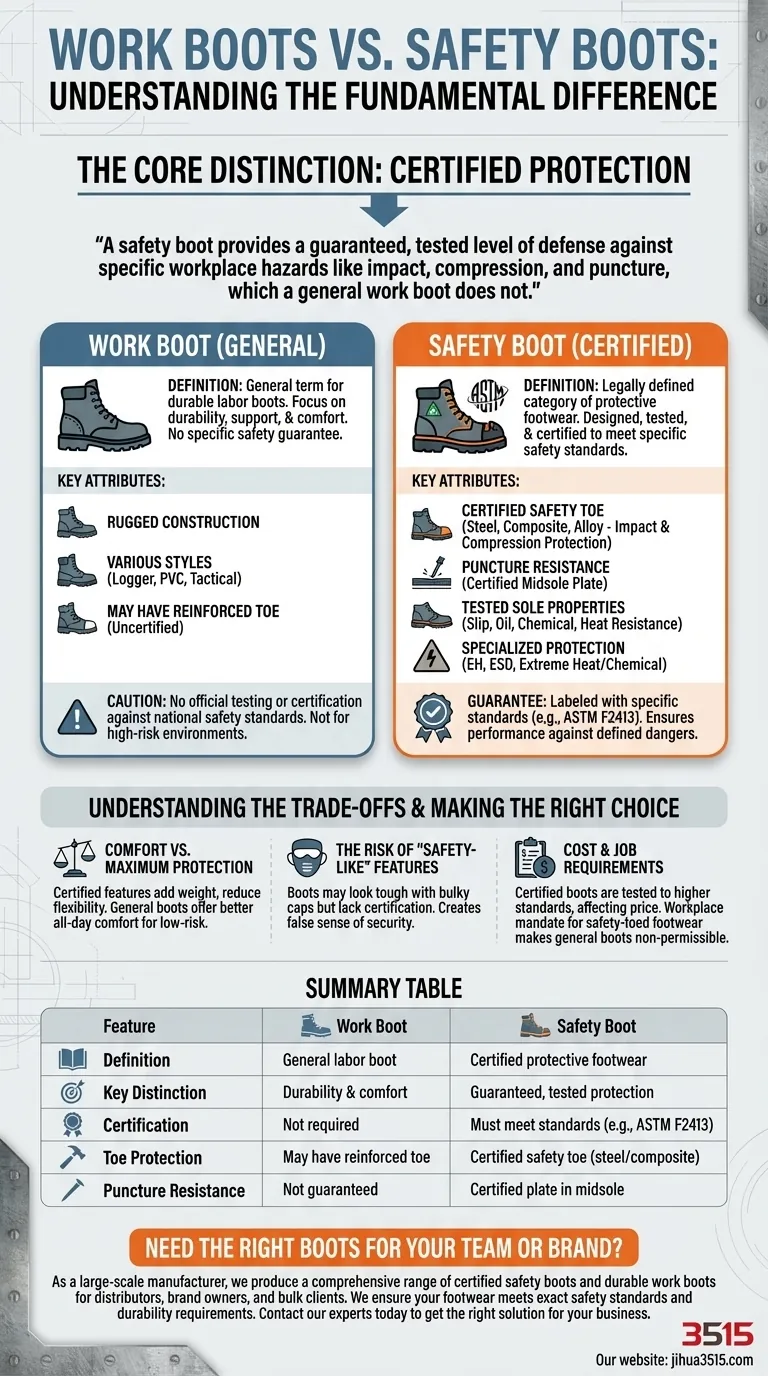
Related Products
- Safety Footwear Wholesale Manufacturer for Custom OEM/ODM Production
- Premium Flame-Retardant Waterproof Safety Boots and Shoes
- Wholesale Customizable Safety Boots Durable & Protective Footwear Manufacturing
- Wholesale Premium Waterproof Nubuck Safety Shoes Boots
- Wholesale Slip-On Safety Boots Manufacturer - Custom Puncture-Proof & Steel Toe
People Also Ask
- How do safety shoes contribute to cost savings for companies? A Strategic Investment in Risk and Cost Management
- What are the cultural perspectives on wearing shoes in the house? A Guide to Home Etiquette & Hygiene
- How long can you wear safety boots? The Lifespan is Determined by Wear, Not Time
- Is safety-toe as good as steel toe? Choose the Right Protection for Your Job
- Is it normal to wear shoes in the house? A Guide to Hygiene, Comfort & Culture

